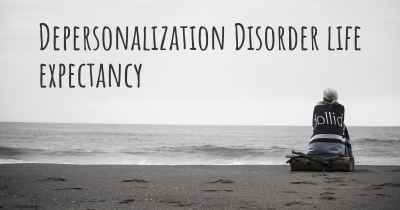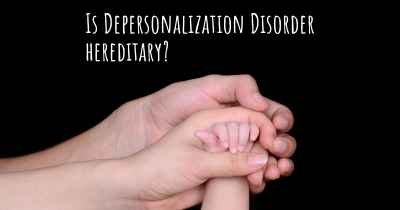What is the history of Depersonalization Disorder?
When was Depersonalization Disorder discovered? What is the story of this discovery? Was it coincidence or not?

The History of Depersonalization Disorder
Depersonalization Disorder, also known as depersonalization-derealization disorder (DDD), is a complex psychological condition characterized by a persistent feeling of detachment from oneself and the surrounding environment. Individuals with this disorder often describe feeling as if they are observing themselves from outside their bodies or living in a dream-like state. The history of depersonalization disorder dates back several centuries, with its recognition and understanding evolving over time.
Early Observations and Recognition
The earliest documented cases resembling depersonalization disorder can be traced back to the late 17th century. French physician Philippe Pinel first described a condition called "manie sans délire" (insanity without delirium), which included symptoms similar to depersonalization. However, it wasn't until the late 19th century that depersonalization disorder began to be more widely recognized.
In 1866, French psychiatrist Louis Jules Ernest Séglas coined the term "dépersonnalisation" to describe a state of detachment from oneself. He observed that individuals experiencing this condition often felt as if they were living in a dream or watching themselves from a distance. Séglas' work laid the foundation for further research and understanding of depersonalization disorder.
Psychodynamic Theories
In the early 20th century, psychodynamic theories gained prominence in the field of psychology, leading to new insights into depersonalization disorder. Sigmund Freud, the father of psychoanalysis, proposed that depersonalization was a defense mechanism against overwhelming anxiety. He believed that individuals with depersonalization disorder were unconsciously detaching themselves from distressing emotions or traumatic experiences.
Freud's theories influenced subsequent researchers and clinicians, who further explored the relationship between depersonalization disorder and psychological trauma. They hypothesized that depersonalization could be a coping mechanism for individuals who had experienced severe emotional or physical trauma.
Recognition as a Distinct Disorder
Depersonalization disorder began to be recognized as a distinct psychological condition in the mid-20th century. In 1941, psychiatrist Maurice D. Stein and psychologist Joseph A. Solomons published a seminal paper titled "Depersonalization: A Clinical Study of 100 Cases." This study provided a comprehensive analysis of depersonalization disorder, including its symptoms, prevalence, and potential causes.
Stein and Solomons' work helped establish depersonalization disorder as a legitimate psychiatric condition, separate from other mental health disorders. Their research also highlighted the need for further investigation into the underlying mechanisms and effective treatment approaches for the disorder.
Advancements in Research and Diagnosis
Over the following decades, research on depersonalization disorder expanded, leading to advancements in its diagnosis and understanding. In 1980, the third edition of the Diagnostic and Statistical Manual of Mental Disorders (DSM-III) included depersonalization disorder as a recognized diagnosis.
The inclusion of depersonalization disorder in the DSM-III helped increase awareness among clinicians and researchers, leading to more accurate diagnoses and improved treatment options. Subsequent revisions of the DSM further refined the diagnostic criteria for depersonalization disorder, ensuring a more standardized approach to its identification and classification.
Contemporary Perspectives and Treatment
Today, depersonalization disorder is recognized as a chronic and often debilitating condition. It is classified as a dissociative disorder in the DSM-5, highlighting its connection to disruptions in an individual's sense of self and reality.
Contemporary research on depersonalization disorder focuses on various aspects, including its neurobiological underpinnings, potential genetic factors, and the development of evidence-based treatments. Cognitive-behavioral therapy (CBT) and medication management are commonly used approaches to help individuals manage their symptoms and improve their quality of life.
Conclusion
The history of depersonalization disorder spans several centuries, with its recognition and understanding evolving over time. From early observations and psychodynamic theories to contemporary research and treatment approaches, the understanding of depersonalization disorder has come a long way. While there is still much to learn about this complex condition, ongoing research offers hope for improved diagnosis, treatment, and support for individuals living with depersonalization disorder.








